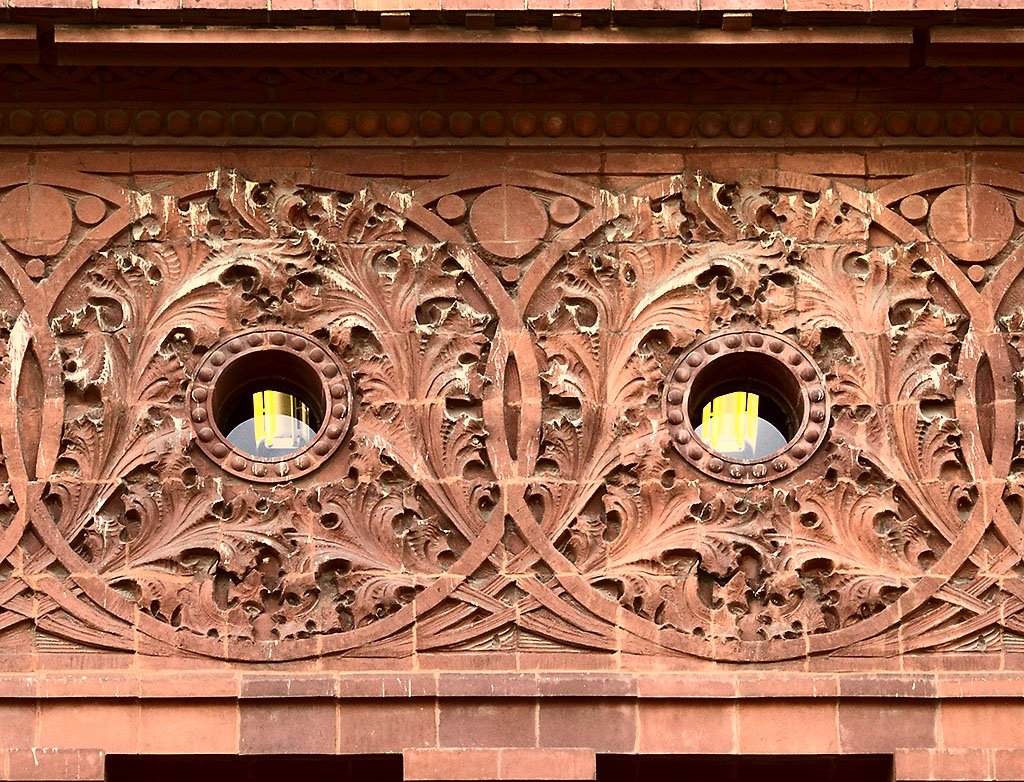#7219. Ornate Terracotta Facade with Circular Windows and Rich Carvings
The image captures a fragment of a building facade made of terracotta or reddish-brown stone, showcasing exquisite carved decorative work. The architectural element presents a portion of the facade featuring two identical circular windows embedded within a richly ornamented panel.
The windows are framed by circular relief rings with a texture of beads or small protrusions. Surrounding each window is an impressive pattern of intertwining floral motifs – curved leaves, scrolls, and carved elements creating a complex, lace-like composition. The ornamental design demonstrates masterful stone carving craftsmanship characteristic of Neo-Gothic or Neo-Romantic architectural styles.
The composition is crowned at the top by a cornice with repeating relief patterns, while the bottom features stonework with clear horizontal lines. Through both circular windows, a yellow glow is visible, indicating interior lighting. This architectural solution creates not only a decorative effect but also serves as a functional element, providing natural illumination to the interior.
The meticulous execution of decorative elements and the symmetry of the composition attest to the high level of craftsmanship of the stonemasons and the artistic value of this architectural object, likely dating to the Historicism period of the late 19th to early 20th century.
